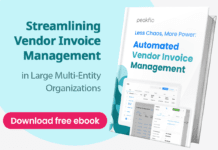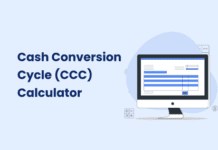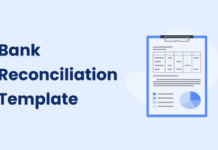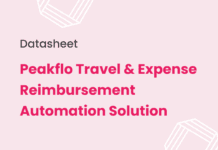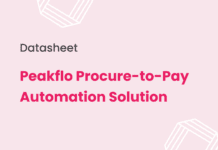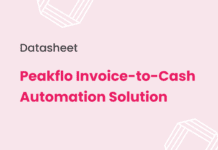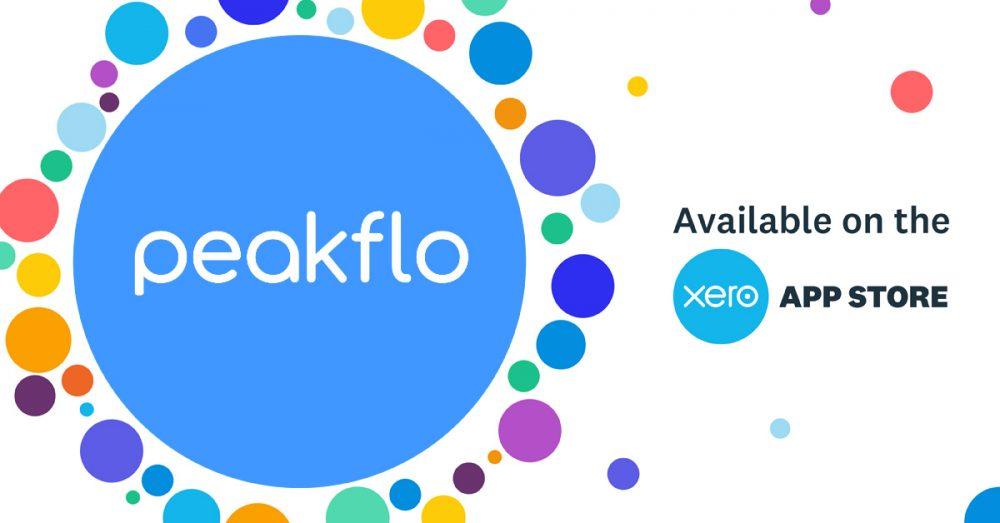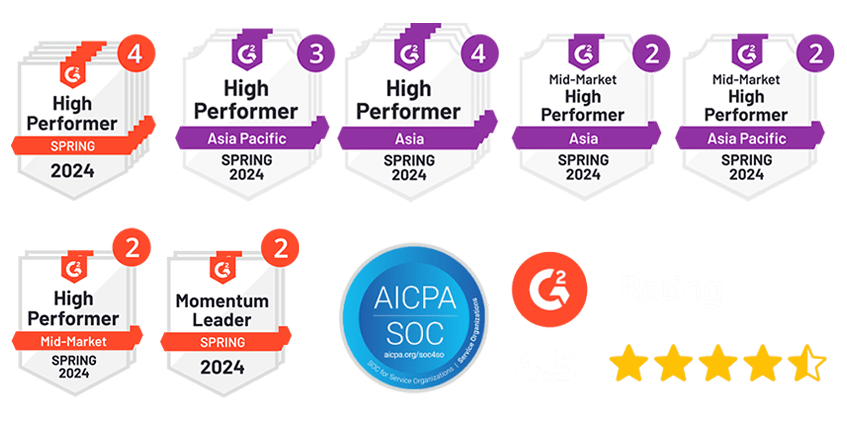In most organizations, expense reimbursement procedures require employees to collect receipts, make spreadsheet reports, and submit their requests to the finance department.
They also need to wait before the claim gets approved, which can take days or weeks. The accounts payable teams have to check every receipt carefully to avoid any issues, plus cross-department approvals can take days to process.
If that’s your case, worry not. In this article, we’ll show you how to streamline the employee reimbursement process in 6 easy steps.
But before diving into solutions, let’s briefly understand what the employee reimbursement process involves.
Understanding the Employee Reimbursement Process
When employees spend their own money for work-related expenses—like travel, meals, or supplies—they typically submit a reimbursement request to their employer. This request usually includes:
- Receipts: Proof of purchase for the expenses incurred.
- Expense Report: A form detailing the nature of the expenses, including dates, amounts, and purposes.
After submission, the request is reviewed by managers and processed by the finance team before the employee gets reimbursed. If the process isn’t smooth, it can cause delays and frustration.
A Detailed Example of Employee Reimbursement
Sarah works for a marketing company. She is asked to attend a conference in another city for work. During her trip, she spends money on travel, meals, and hotel stays. After returning, Sarah needs to get reimbursed for these expenses.
Sarah keeps all her receipts during the trip and fills out an expense report. It includes:
- Dates: December 10-14
- Purpose: Attending the marketing conference
- Amounts: She lists each expense with the corresponding amounts:
- Airplane ticket: $300
- Hotel stay: $450
- Meals: $200
- Taxi rides: $40
Sarah submits her expense report and the receipts to her manager for approval. She also writes a brief note explaining the purpose of each expense.
Sarah’s manager checks the report and receipts. He confirms that the expenses are work-related and approves them. After approval, the expense report is sent to the finance team. The finance team checks everything to ensure the amounts match the receipts and that the expenses follow company policy.
Once everything is verified, the finance team processes the reimbursement and transfers the total amount of $990 (the sum of all expenses) to Sarah’s bank account.
Why Streamlining Employee Reimbursement Is Important
A streamlined reimbursement process has numerous benefits:
- Improved Employee Satisfaction: Employees appreciate a fast and simple reimbursement process. It shows that their contributions and expenses are valued, which can lead to higher morale and productivity.
- Reduced Errors: A clear and straightforward process reduces the likelihood of mistakes in expense reporting and approvals. Fewer errors mean less time spent fixing issues.
- Faster Reimbursements: Streamlining the process ensures that reimbursements are processed quickly, providing employees with timely financial relief.
- Better Compliance: A streamlined process can include checks and balances to ensure compliance with company policies and tax regulations.
- Cost Savings: An efficient process can reduce administrative costs and save time for both employees and finance teams.
Steps to Streamline the Employee Reimbursement Process
When employees incur expenses for business purposes, they expect to be reimbursed quickly and easily. However, a complicated or slow process can lead to dissatisfaction and even financial strain for employees. Let’s look at how to simplify the employee reimbursement process to make it easier for everyone.
1. Set a clear reimbursement policy
The first step is to create a company policy regarding business expenses and reimbursement procedures.
Here’s how:
- Make a list of allowable expenses, such as healthcare, personal development, business trips, and team-building activities.
- To make sure the expense claims are valid, set a rule regarding the required documentation, including physical invoices and reasons for the expenses.
- Determine a set schedule in which employees should submit expense reports. For example, expense reports should be submitted within 60 days.
- State clearly what expenses are not reimbursable and why. These might include car fuel, movie tickets, and personal meals.
- Set spending caps to avoid a budget deficit. For instance, the company will only pay for the most affordable airfare when an employee is on a business trip.
Using an automation tool makes things much simpler. Finance teams can set spending limits for each department, create custom rules, and set up an approval process for reimbursements—from submitting expense reports to making payments.
2. Enable the employees to submit reimbursement forms in a breeze
In a manual reimbursement process, employees spend a lot of time filling out forms instead of focusing on their work. This lowers their productivity and can slow down business operations.
To avoid this, use automation software instead of online forms to facilitate an easy and quick expense receipt submission process.
Automation comes with receipt scanning technology known as Optical Character Recognition (OCR), saving a lot of time from manual data entry and providing higher accuracy.
Peakflo’s AI-powered OCR can quickly scan unstructured documents, like receipts, and turn them into digital files in seconds. It can also automate sorting hundreds of attachments and documents into standard or custom categories.
3. Set approval workflows with the right stakeholders
After employees submit expense reports, the finance team’s next challenge is chasing down approvals through endless email threads.
In large organizations, it’s often unclear where these claims should go and who needs to approve them.
This is where using technology comes in handy. With automation, you can set custom approval workflows with multi-level stakeholders and assign them to the right budgets.
Plus, you can easily track the status of reimbursements through a timeline with an audit trail, and consolidate communications in one place.
4. Gain full visibility on the status of expense claims
Manual reimbursement processes often lead to costly mistakes. Receipts are often scattered, causing data mismatches and duplicate payments.
This method also lacks transparency, as employees can’t track the status of their claims. Approvers may also miss email reminders, adding further delays to the process.
With travel and expense reimbursement software, you can invite any team members with roles-based access. Both employees and approvers can track the status of reimbursement claims in one dashboard.
A secure app for managing reimbursement data helps organizations organize expenses for audits and handle financial risks more effectively.
5. Make it easy to send payments to your employee’s bank account
Once expense claims are approved, the next challenge is transferring the funds to employees’ bank accounts.
In a manual setup, the finance team has to log into a payment app and request a one-time password (OTP) before making each payment. This involves repeatedly entering usernames and passwords, increasing the chance of errors and potential security risks.
To ensure a secure disbursement process, we recommend connecting your bank accounts with an automation system. This way, you don’t need to manually enter payment details, send reimbursement funds in bulk, and make payments with a digital wallet that you can top up whenever.
Most automation software also follows the highest standard of security practices, removing the worries of data breaches and fraud as well as payment declines.
6. Manage business expenses with real-time budget reports
In most companies, people use spreadsheets to manage data. The problem is that entering and updating data by hand takes a lot of time and effort.
Without technology, the finance team has to set up budget reports for each department in a spreadsheet and update them often. This way of reporting doesn’t give real-time updates, making it hard for budget managers to make quick, informed decisions.
By using automation software, you can manage budgets effectively. The tool will automatically sync business expenses and set up real-time budget reports. Therefore, improving data accuracy and team productivity by twice.
Benefits of Automating the Process for Businesses
Automating the reimbursement process offers several benefits for businesses:
- Saves Time: Automating reimbursements reduces the time spent on manual tasks like checking receipts and processing claims. Employees can submit expenses online, and the system can handle approvals and payments faster.
- Reduces Errors: Automation helps eliminate mistakes that can happen with manual data entry, such as entering incorrect amounts or missing receipts.
- Improves Accuracy: Automated systems can track and calculate expenses more accurately, ensuring employees are reimbursed correctly.
- Boosts Employee Satisfaction: Employees receive their reimbursements faster and more reliably, leading to improved satisfaction.
- Increases Efficiency: With automated processes, businesses can process reimbursements quickly and without delays, which helps keep things running smoothly.
- Provides Better Insights: Automated systems track all reimbursements, making it easier for businesses to monitor spending patterns and identify areas where costs can be reduced.
- Enhances Compliance: Automation ensures that all reimbursements follow company policies and any legal regulations, reducing the risk of non-compliance.
- Reduces Administrative Costs: By reducing the need for manual work, businesses can save on administrative costs and allocate resources to other areas.
More effective reimbursements and more productive employees with Peakflo
With Peakflo’s Travel & Expense Management solution, you can streamline the reimbursement process using some of our handy features:
- Define highly configurable expense policies. Set up policies in Peakflo to manage work expenses like travel, purchases, and mileage reimbursements. With a daily spending limit (per diem), you can easily control budgets, even if employees are traveling across countries or need partial allowances. This helps keep spending accurate and efficient.
- Automated approval workflows. Use smart approval workflows so employees can easily set up reimbursement rules, assign the right people, track progress with an audit trail, and get automatic reminders. Approvers can also approve multiple bills at once.
- Automatic data entry. Easily scan bills and enter the information into your system with great accuracy using AI-powered OCR. This technology helps your organization reduce mistakes and save time by cutting down on manual data entry.
- Detect anomalies with ease. Peakflo AI can provide real-time alerts for claims deviating from expected patterns, such as unusually high amounts, out-of-policy purchases, or duplicate submissions. So you can stay aware of anomalies and frauds.
- Auto-disbursement. Schedule bills for payments in bulk and pay off local and offshore employees securely using a digital wallet with a 0% FX markup rate.
- Real-time budget management. Set up a new budget in minutes and Peakflo will sync every bill to the right budget. Tag your team members and receive notifications once the budget limit exceeds 50%, 80%, or 90%, or when the budget is finished or has exceeded the initial amount.
A fast, transparent, and error-free reimbursement process not only benefits employees but also helps organizations save time and money in the long run.
Taking the time to streamline reimbursement processes is an investment in your employees and your company’s future. So, are you ready to streamline your reimbursement process?
FAQ
1. What is reimbursement in salary?
Reimbursement in salary refers to the money an employer gives back to an employee for expenses they paid out of their own pocket while doing their job. For example, if an employee buys office supplies or travels for work, the employer may reimburse them for those costs.
2. What is reimbursement payment?
A reimbursement payment is the amount of money paid back to an employee for expenses they incurred while performing work-related tasks. This could include travel expenses, meals, or other work-related costs.
3. Is a reimbursement a refund?
No, a reimbursement is not the same as a refund. A refund is when you get money back for something you returned, like a product. A reimbursement is when you get money back for expenses you paid for while working.
4. Is the reimbursement amount taxable?
In most cases, reimbursements are not taxable as long as they are for legitimate work-related expenses and are paid according to company policies. However, if the reimbursement is for personal expenses or exceeds the actual cost, it may be taxable.









![Why AI Sales Calls Are Making Good Sales Reps Even Better [2025 Guide] ai sales calls](https://cdn-kmjmp.nitrocdn.com/YvtqmrsiHUxqerlSiZgbfzqqTARWTElr/assets/images/optimized/rev-834053b/blog.peakflo.co/wp-content/uploads/2025/09/65168cf6-3001-4733-8cbc-12d5684cf449-218x150.webp)







